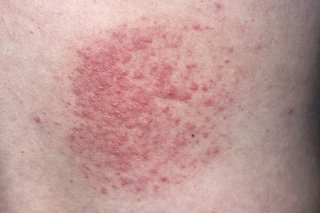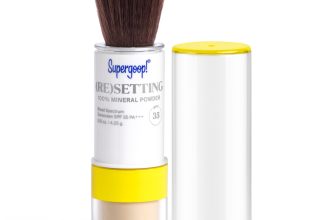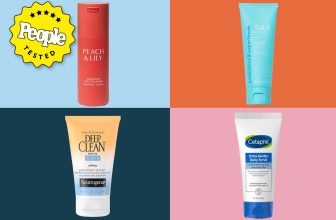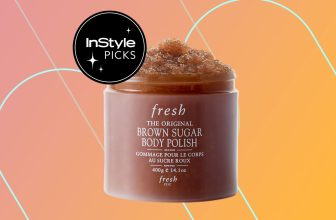Rash from Sunscreen

Sure, Rash. Sunscreen is crucial to protect your skin from harmful UV rays and prevent sunburns and skin damage.
Rash from Sunscreen it’s important to choose a sunscreen with -spbroadectrum protection and a high SPF rating to ensure maximumm Many people underestimate the importance of sunscreen, but it plays a vital role in maintaining healthy skin. The sun’s UV rays can cause premature aging, skin cancer, and other skin damage.
Therefore, incorporating sunscreen into your daily skincare routine is essential for overall skin health. Understanding the benefits of sunscreen and how to choose the right one for your skin type will help you maintain a youthful and healthy complexion. Let’s explore the importance of sunscreen and how to make informed decisions when selecting the best sunscreen for your needs.
:max_bytes(150000):strip_icc()/VWH-DermNet-SunRash-01-070b0a6c4c344721ae4c68fffcd6aa79.jpg)
Identifying A Sunscreen Rash
Identifying a Sunscreen Rash
Identifying a sunscreen rash is crucial for effective management. By recognizing the common symptoms and types of reactions, individuals can take appropriate steps to address and prevent these unpleasant skin issues.
Common Symptoms
A sunscreen rash can manifest with a variety of symptoms, including:
- Redness or inflammation of the skin
- Itching or burning sensation
- Raised bumps or hives
- Peeling or blistering
Types Of Reactions
There are different types of reactions that can occur due to sunscreen, such as:
- Allergic contact dermatitis
- Photoallergic dermatitis
- Irritant contact dermatitis
Key Ingredients To Avoid
Key Ingredients to Avoid:
Protecting your skin from the sun’s harmful rays is essential, but it’s equally important to choose a sunscreen that doesn’t cause skin irritation or rash. Some sunscreens contain chemicals that can trigger an allergic reaction, and it’s crucial to avoid these ingredients if you have sensitive skin. Here are some key ingredients to avoid:
Chemicals That Trigger Reactions
Chemical sunscreens contain a variety of ingredients that can cause skin irritation and rash, especially if you have sensitive skin. Some of the most common chemicals that can trigger reactions include:
- Oxybenzone
- Octinoxate
- Homosalate
- Octisalate
- Octocrylene
- Avobenzone
If you notice any rash or skin irritation after using a sunscreen that contains any of these chemicals, it’s best to switch to a different brand that uses different ingredients.
Natural Vs. Chemical Sunscreens
When it comes to choosing a sunscreen that won’t cause a rash or skin irritation, natural sunscreens are often a better choice than chemical sunscreens. Natural sunscreens are made with ingredients that are less likely to cause an allergic reaction, such as:
- Zinc oxide
- Titanium dioxide
- Iron oxide
- Cocoa butter
- Coconut oil
- Shea butter
Chemical sunscreens, on the other hand, contain a variety of synthetic chemicals that can cause skin irritation and rash. If you have sensitive skin, it’s best to opt for a natural sunscreen that uses only natural ingredients.
Immediate Steps To Soothe A Rash
Cooling Remedies
Rashes from sunscreen can be uncomfortable, but there are several immediate steps you can take to soothe the irritation. Cooling remedies can help alleviate the discomfort and reduce inflammation.
Topical Applications
Applying topical applications can also provide relief from the rash. These can include over-the-counter hydrocortisone cream, aloe vera gel, or calamine lotion. These products can help calm the skin and reduce redness and itching.
Long-term Skin Care Strategies
To prevent a rash from sunscreen, consider long-term skin care strategies. Opt for mineral-based sunscreens and patch test new products before use. Keep skin moisturized and seek shade during peak sun hours for added protection.
Routine Adjustments
Making small changes in your daily routine can help reduce the occurrence of sunscreen rash.
Moisturizers And Barriers
Using appropriate moisturizers and barriers can protect your skin from sunscreen rash. Long-Term Skin Care Strategies When using sunscreen, consider routine adjustments and moisturizers to prevent rash. In your daily routine, make small changes to protect your skin from sunscreen rash. By using moisturizers and barriers, you can safeguard your skin against the effects of sunscreen.
Choosing The Right Sunscreen
Ingredients To Look For
Sunscreen with zinc oxide and titanium dioxide are gentle on the skin.
Antioxidants like vitamin C and E help protect against UV damage.
Recommended Products
- CeraVe Hydrating Mineral Sunscreen SPF 30 – Contains essential ceramides for hydration.
- La Roche-Posay Anthelios Melt-in Milk Sunscreen SPF 100 – Offers high protection against UVA and UVB rays.

When To See A Doctor
If you develop a rash from sunscreen, it’s essential to see a doctor promptly. Seeking medical advice can help determine the cause of the reaction and provide appropriate treatment for relief and prevention in the future.
When to See a Doctor If you experience severe reactions after using sunscreen, it’s crucial to seek medical attention promptly. Here are the signs of severe reactions to watch for and the expected outcomes after professional advice. Signs of severe reactions If you notice persistent redness, swelling, or blistering on your skin after applying sunscreen, it could indicate a severe allergic reaction. Additionally, symptoms such as severe itching, breathing difficulties, or dizziness should not be ignored. Expected outcomes after professional advice Upon seeking medical help, the doctor will assess the severity of your reaction and recommend appropriate treatment. This may include topical or oral medications to alleviate symptoms and prevent further complications. In some cases, the doctor may also advise on alternative sunscreen products that are less likely to cause a reaction. Following the professional’s guidance is essential for recovery and to minimize the risk of future adverse reactions.
Alternative Sun Protection Methods
Combatting a rash from sunscreen may lead you to explore alternative sun protection methods. Options like protective clothing, seeking shade, and using mineral-based sunscreens can shield your skin without causing irritation. Experimenting with different methods can help you find the best sun protection for your skin.
If you have sensitive skin or have experienced a rash from sunscreen, you may be hesitant to use it again. Fortunately, there are alternative methods to protect your skin from the sun’s harmful rays.
Clothing And Accessories
One of the easiest ways to protect your skin is to wear protective clothing and accessories. Clothing made from tightly woven fabrics offer more protection than loose-fitting clothing. Consider wearing long-sleeved shirts, pants, and wide-brimmed hats to provide additional coverage. Sunglasses can also protect your eyes from harmful UV rays.
Scheduling Outdoor Activities
Another way to avoid a rash from sunscreen is to schedule outdoor activities when the sun is less intense. The sun’s rays are strongest between 10 a.m. and 4 p.m. If possible, plan outdoor activities in the early morning or late afternoon. This can also help you avoid the hottest part of the day. While sunscreen is an essential tool to protect your skin from the sun, it’s not the only option. By wearing protective clothing and accessories and scheduling outdoor activities appropriately, you can still enjoy the outdoors while protecting your skin from harmful UV rays.

Educating Others About Sunscreen Sensitivities
Rash from sunscreen can be a challenging experience, but it is essential to raise awareness about sunscreen sensitivities to help others navigate this issue.
Sharing Personal Experiences
Sharing personal experiences can help individuals understand the impact of sunscreen sensitivities.
Raising Awareness In Communities
Raising awareness in communities ensures that individuals are educated about the potential risks of using sunscreen and the importance of finding suitable alternatives.
Frequently Asked Questions
What Does A Sunscreen Rash Look Like?
A sunscreen rash can appear as red, itchy, or inflamed skin. It may also cause small bumps or blisters.
How To Get Rid Of Sunscreen Rash?
To get rid of sunscreen rash, wash the affected area with mild soap, apply aloe vera or hydrocortisone cream, and avoid further sun exposure. If the rash persists, consult a dermatologist for proper diagnosis and treatment.
What Sunscreen Can I Use If I’m Allergic To Sunscreen?
If you’re allergic to sunscreen, try using mineral-based sunscreens with zinc oxide or titanium dioxide. Look for “hypoallergenic” or “sensitive skin” labels.
How Do You Treat Sun Hives?
Treat sun hives with cool compresses. Use anti-itch creams and take antihistamines for relief. Avoid sun exposure.
Conclusion
To sum up, being cautious about sunscreen choices can prevent skin irritations. Check ingredients and opt for hypoallergenic options. Prioritize skin health and seek medical advice if rashes persist. Your skin’s well-being is paramount, so choose sun protection wisely for a comfortable outdoor experience.







